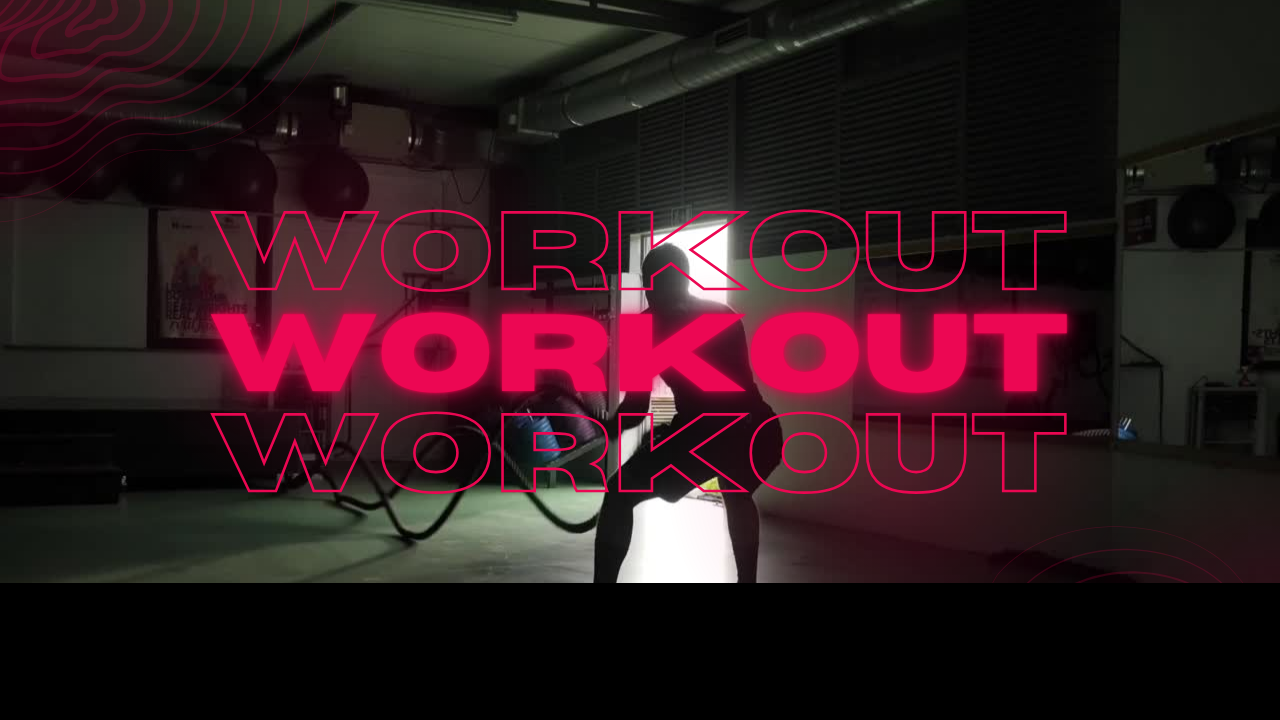
Post by : Sam Jeet Rahman
Disclaimer: This article is for informational purposes only and is not a substitute for professional medical or fitness advice. Always consult a certified trainer or healthcare professional before starting a new workout program.
The fitness industry is evolving, and one of the biggest trends redefining how people train today is adaptive fitness. Unlike one-size-fits-all workouts, adaptive training focuses on personalized movement patterns and targeted muscle engagement based on an individual’s physical abilities, lifestyle, and goals.
Whether you’re recovering from an injury, dealing with limited mobility, or simply want to correct muscle imbalances, adaptive workouts are designed to meet your body where it is — and safely help you build from there.
Modern fitness isn’t just about lifting heavier weights or running faster miles. It’s about training smarter, not harder. Adaptive fitness takes into account your posture, muscle balance, flexibility, and recovery rate to design a workout that minimizes risk while maximizing results.
Some of the main reasons this trend is gaining traction include:
Custom Fit for Every Body Type: Exercises are modified to match your physical capabilities and goals.
Focus on Longevity: Reduces overtraining and injury risk by strengthening weak or underused muscles.
Improved Recovery: Especially beneficial for people with joint issues, chronic pain, or past injuries.
Holistic Progress: Emphasizes strength, mobility, and balance rather than just aesthetics.
Your body adapts constantly — whether to stress, sleep, or physical activity. Adaptive fitness uses this biological principle of progressive adaptation to stimulate specific muscles safely and effectively.
Here’s how it works:
Assessment First: Trainers evaluate your current mobility, posture, and muscle imbalances.
Customized Programming: Based on your strengths and weaknesses, workouts are adjusted for volume, intensity, and movement range.
Constant Feedback Loop: Progress is tracked, and workouts evolve as your body adapts and improves.
By targeting muscles that are underused and correcting overactive ones, adaptive training helps create better symmetry, improved posture, and enhanced overall strength.
Adaptive workouts emphasize functional movement, which means they strengthen the muscles you use in everyday life. Commonly targeted areas include:
Core and Stabilizers: To improve balance, posture, and lower back health.
Glutes and Hamstrings: To correct weak lower-body strength and support hip mobility.
Shoulders and Upper Back: To counteract “tech-neck” and poor posture from sitting long hours.
Knees and Ankles: For joint stability and injury prevention in athletes and older adults.
Each program is fine-tuned based on your specific body mechanics, ensuring you train safely while building consistent strength.
Starting an adaptive fitness routine doesn’t require expensive gym memberships or high-end technology. It begins with awareness and structure.
Here are practical steps to get started:
Before lifting weights or running sprints, identify your body’s movement limitations. Many trainers offer mobility screenings to pinpoint tight or weak muscle groups.
Instead of speed, emphasize precision and form. Controlled repetitions allow your brain and muscles to build stronger neuromuscular connections.
Integrate stretches, foam rolling, and dynamic warm-ups. These prepare your muscles and joints for better range of motion and reduce stiffness.
Adaptive fitness thrives on incremental progression. Gradually increase resistance, intensity, or duration as your body adjusts.
The core principle of adaptive fitness is tuning in to how your body feels. Fatigue, soreness, or reduced mobility are signs to adjust your training plan.
Technology has played a major role in popularizing adaptive training. From smart wearables to AI-powered fitness apps, the tools available today make tracking progress easier than ever.
Some key tools and techniques include:
Resistance Bands and Suspension Trainers: Great for controlled resistance and functional strength.
Stability Balls and Balance Boards: Improve coordination and core strength.
Smart Mirrors and Apps: Offer real-time form correction and personalized workout guidance.
Wearable Trackers: Monitor heart rate variability and recovery to prevent overtraining.
For those training at home, bodyweight workouts and resistance bands are perfect starting points for building adaptive strength.
Adaptive fitness is not limited to athletes or gym enthusiasts. It’s for everyone — from office workers with tight shoulders to seniors improving mobility.
You can benefit if you:
Have a sedentary lifestyle and want to ease into fitness.
Are recovering from an injury or surgery.
Want to correct postural issues or chronic pain.
Seek to enhance athletic performance through smarter training.
Need to reduce stress and improve body awareness.
Adaptive workouts aren’t just about physical transformation. Studies show that consistent, mindful movement enhances mental clarity, stress resilience, and emotional well-being.
Because the routines are personalized, they build confidence and create a positive relationship between your body and mind — turning exercise into a sustainable lifestyle habit rather than a chore.
As AI, biomechanics, and personalized data analysis continue to advance, adaptive fitness is set to become the new normal in health and performance training.
Future fitness systems will likely integrate real-time muscle tracking, AI-powered form correction, and predictive recovery analytics, allowing individuals to train precisely according to their physical needs.
This movement represents a major shift away from generic, high-intensity workouts toward personalized, intelligent training that prioritizes long-term health.
Adaptive fitness is not a short-lived trend — it’s the future of how we train, recover, and build resilient bodies. By focusing on your unique strengths, weaknesses, and goals, adaptive training allows you to work smarter, stay injury-free, and build lasting strength that serves you for life.
If you’re ready to begin, start small: assess your body, move intentionally, and progress at your own pace. Your body isn’t a machine — it’s an adaptive system, capable of incredible transformation when trained with precision and care.

Blake Lively Claims $160M in Damages Over Defamation Case
Blake Lively demands $160M+ for career and business losses, citing a smear campaign during It Ends W

iPhone 18 Series to Feature 24MP Selfie Camera Upgrade
Apple’s iPhone 18 series may debut a 24MP front camera, including an under-display sensor for the fo

Conservative MPs Departures Raise Questions on Poilievre’s Grip
Two Conservative MPs leave caucus, sparking speculation over Pierre Poilievre’s leadership and the p

Jannik Sinner Defends ATP Finals Title Against Carlos Alcaraz
Jannik Sinner starts ATP Finals defense amid rivalry with Carlos Alcaraz, both vying for the year-en

US Expands Visa Screening Under Strict “Public Charge” Rules
US State Dept enforces strict public charge rules, denying visas to applicants likely to rely on gov

Why Taylor Swift Missed 2025 Grammy Nominations Explained
Taylor Swift’s album missed 2025 Grammys due to release date rules, not lack of recognition. She’s s

Prabowo Subianto Retains 78% Approval Amid Challenges
Despite protests and economic pressures, Indonesian President Prabowo Subianto maintains 78% approva

The New Season Alert Maharani Season 4 Coming Soon
Maharani Season 4 arrives on SonyLIV with Huma Qureshi as Rani Bharti facing new rivals bold politic

Paramount+ to Stream PBR’s Top Bull Riding Series in 2025
Paramount+ secures 5-year rights for PBR's "Unleash the Beast," streaming live across 17 states from

Zohran Mamdani Victory Speech Goes Bollywood with Dhoom Machale
Zohran Mamdani wins NYC mayor race, becoming the city’s first Muslim and South Asian mayor, making h

UAE Life High Stress 3 Simple Ways Expats Can Manage Pressure
Expats in the UAE face daily pressure and burnout Learn 3 simple effective ways to manage stress fin

Smart Meal Prep in Dubai Save Money Stay Healthy
Plan smart eat fresh Discover how meal prepping in Dubai helps you save money eat healthy and enjoy

The Ultimate Guide to Dieting in Dubai Keto vs Vegan vs Mediterranean
Discover Dubai’s top diet trends Keto Vegan and Mediterranean Find which plan fits your lifestyle f

Stay Fit in Dubai 7 Fun Outdoor Workouts Without a Gym
Explore 7 fun ways to stay fit in Dubai from beach runs to desert hikes and skyline yoga No gym nee

Beyond Biryani: Mastering Portion Control in Dubai’s Melting Pot of Cuisines
Discover how to enjoy Dubai’s diverse cuisines wisely Learn simple portion control tips to stay heal